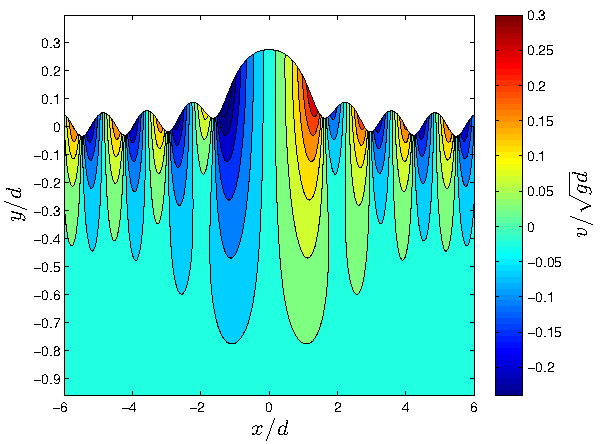23 Nov 2015

Yesterday with my collaborators D. Clamond and D. Mitsotakis we submitted a new manuscript devoted to an improved version of Serre-Green-Naghdi equations. In particular, we improve its dispersion relation properties. Somebody will say that this point is not really new and he/she will be totally right. The novelty in our study consists in the fact that we improve the dispersion relation property, while preserving the energy conservation and having the Galilean invariance property. These two points are essential for physically sound modeling of water waves.
The details can be found in our preprint:
14 Nov 2015

The next week (more precisely from the 16th to 21st of November) I am going to spend at the Institute of Mathematics ‘Simion Stoilow’ (IMAR), Bucharest, Romania after a kind invitation of Dr. Delia Ionescu-Kruse. I hope to be able to share with you the first results of this burgeoning collaboration.
07 Nov 2015

The last couple of weeks were very rich in terms of preprints submissions. No particular increase in productivity. It just happened that a certain number of research projects were finalized by this time. I don’t have any other explanation. In any case, here is the list of fresh manuscripts:
-
M. Chhay, D. Dutykh, M. Gisclon & Ch. Ruyer-Quil. Asymptotic heat transfer model in thin liquid films, Submitted, 2015
-
G. Khakimzyanov & D. Dutykh. On supraconvergence phenomenon for second order centered finite differences on non-uniform grids, Submitted, 2015
-
G. Khakimzyanov, D. Dutykh, D. Mitsotakis & N. Shokina. Numerical solution of conservation laws on moving grids, Submitted, 2015
-
M. Chhay, D. Dutykh & D. Clamond. On the multi-symplectic structure of the Serre-Green-Naghdi equations, Submitted, 2015
I am looking forward to read any comments from Referees!
25 Oct 2015

A few days ago we (D. Clamond, A. Duran and me, Denys Dutykh) submitted a new manuscript devoted to the efficient computation of generalized capillary-gravity solitary waves in the full Euler equation with the free surface:
It is a follow-up of our previous study, which has just been accepted to the Journal of Fluid Mechanics:
In the new manuscript we explain in details the numerical methods employed to solve the nonlinear Babenko equation. The code produced after this study is freely available in open source at the following URL address:
In particular, it allows to compute the physical quantities not only on the free surface, but also in the fluid bulk. The picture above shows the distribution of the vertical velocity component under a generalized solitary wave. You are invited to use it in your own research on the exciting topic of capillary-gravity waves!
30 Sep 2015
From the 1st to 11th of October, 2015 I am going to visit for another time the Institute of Computational Technologies (“ICT SB RAS”). On the programme is the development of algorithms on adaptive grids and a wave/floating obstacle interaction problem. So, I hope to report on this research in the nearest future.





